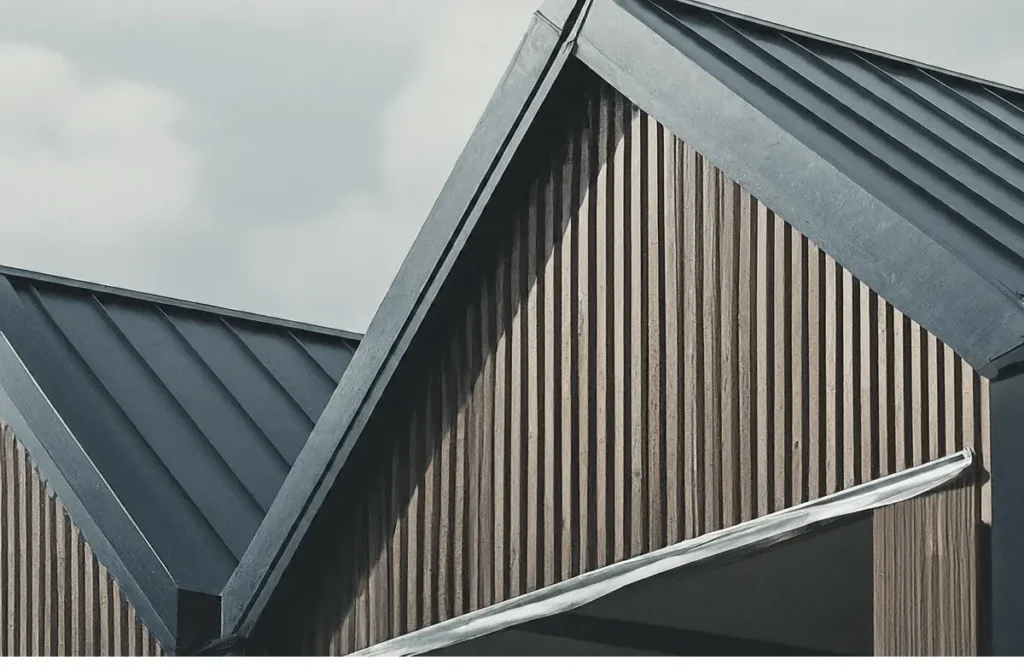PVC roofs have many benefits. They are great for flat or low-slope roofs because they handle harsh weather, chemicals, and fire well. This makes them a top choice for business owners wanting a long-lasting and reliable roof. Learning how to install PVC roofing panels is a bit tricky. There are three main ways to do this: using adhesive, mechanical fasteners, or induction welding. Each method has its own steps and benefits.
The adhesive installation gives a clean look without visible fasteners, which is ideal for complex roofs. The mechanical attachment uses screws and plates, which are suitable for quick jobs and high-wind areas. On the other hand, Induction welding bonds the PVC without visible fasteners, making it seamless and strong against wind. Roofing experts recommend choosing a method based on your roof type, conditions, and budget.
3 Easy Ways To Install PVC Roofing Panels
Here, we have mentioned the detailed installation process for the three methods.
1. Adhesively Attaching
Tools Needed:
- Utility Knife: This is used to cut the PVC to size.
- Adhesive Roller: To spread the adhesive evenly.
- Seam Roller: To press down seams tightly.
- Tape Measure: For accurate measurements.
- Chalk Line: To mark fastener placements.
- Cleaner: To clean the surface (isopropyl alcohol works well).
Installation Steps:
Here is the detailed process for installing PVC roofing panels using the adhesive method.
- Prepare the Roof: Clean and dry the roof, removing debris and sharp objects.
- Apply Adhesive: You can use the adhesive roller to apply the adhesive on both the roof and the underside of the PVC.
- Mark the Position Membrane: Roll out the PVC over the adhesive, using the chalk line to keep it straight.
- Roll the Membrane: Use the seam roller to press down the membrane, especially at the edges and around any obstacles.
- Seal the seams: Apply adhesive to seams where sheets overlap and press them together with the seam roller.
- Inspect & Clean: Check for bubbles or loose edges. Clean up any extra adhesive with a PVC cleaner or acetone.
Note: There are two types of adhesives: solvent-based (fast-setting but with more VOCs) and water-based (easier to handle but slower to set).
2. Mechanically Attaching
Tools Needed:
- Screw Gun: For fastening screws.
- Seam Probe: To check seams after welding.
- Hot Air Welder: For welding seams.
- Utility Knife: To trim the membrane.
- Tape Measure: For accurate measurements.
- Chalk Line: To mark fastener placements.
- Insulation Boards & Fasteners: If insulation is needed.
- Cleaner: To prepare the roof deck.
Installation Steps:
The installation process of PVC roofing panels using mechanical attaching is as follows:
- Inspect & Prepare: Clean the roof deck and remove any debris.
- Lay Insulation Boards (if needed): Place and secure them if your roof needs insulation.
- Position the Membrane: Roll out PVC sheets and mark where fasteners will go with a chalk line.
- Attach the Membrane: Secure the PVC with screws and plates, making sure fasteners go through the membrane and into the roof deck.
- Overlap & Weld Seams: Overlap edges by 1-2 inches and weld the seams with the hot air welder.
- Secure the Perimeter: Add extra fasteners around the roof’s edges.
- Inspect Seams: Double-check them to ensure there are no gaps.
- Perform a Final Inspection: Make sure everything is secure and clean up any debris.
3. Induction Welding
Tools Required:
- Induction Welding Machine: To heat the weld plates.
- Magnetic Plates: Placed under the membrane for welding.
- Insulation & Cover Board: If insulation is needed.
- Membrane Roller: To press down the membrane after welding.
Installation Process:
The PVC roofing panels installation process using induction welding is as follows:
- Clean the Roof Deck: First, clean and dry the surface.
- Roll out PVC sheets and align them.
- Placing the Magnetic Plates: Position these under the membrane where the welds will be.
- Perform Induction Welding: You can now use the welding machine to heat the plates and then bond the membrane.
- Roll the Seams: Now roll the seams to ensure a strong bond.
How to install UPVC roofing?
You can install UPVC roofing using screws or clips; however, you must ensure sealing the edges with a weatherproof sealant. It’s important to use the correct screws or fasteners recommended for UPVC to avoid damage to the material. Additionally, always check that the roofing is properly aligned to ensure a secure and long-lasting installation.
How to secure PVC roofing?
Secure PVC roofing by using appropriate fasteners or adhesives recommended for PVC. Be sure to space the fasteners evenly to distribute weight and pressure across the roofing material. Additionally, ensure that the fasteners are corrosion-resistant to prevent any weakening of the structure over time due to weather exposure.
How to cut PVC roofing panels?
Conclusion
These are the three methods for installing PVC roofing panels. Experts recommend choosing the method based on your roof type and the conditions it will be exposed to, as well as your budget, technical know-how, and aesthetic preferences. If you are unable to do it yourself, you can always seek the help of professionals. At Precision Roofing, we offer expert PVC roof installation services. Our team is highly skilled and uses advanced tools and high-quality materials to ensure a durable and long-lasting roof installation. For more information about our PVC roof installation services, you may contact us today!

